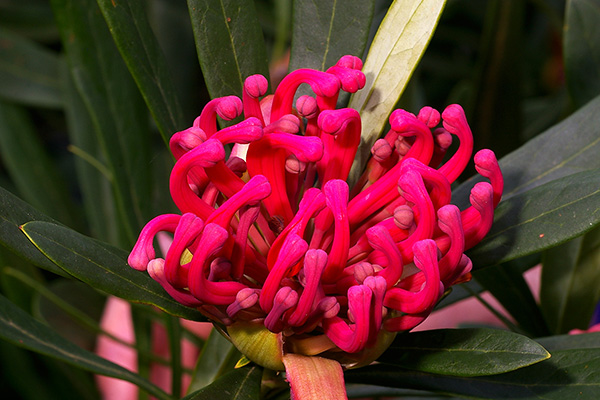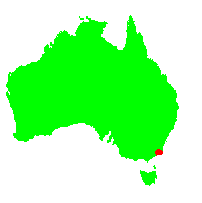General Description:
The genus Telopea contains five species all confined to east coast regions from northern New South Wales to Tasmania. The most famous species is Telopea speciosissima, the New South Wales’ waratah, which has been in cultivation since the first years of European settlement in Australia. The other four members of the genus would undoubtedly be more widely known and grown were it not for their illustrious relative. Indeed, the three southern species have all been given Awards Of Merit by the Royal Horticultural Society in the first half of the 20th Century (the fourth, Telopea aspera, or Gibraltar Range waratah, was split off as a separate species from the NSW waratah.
Telopea oreades is an upright shrub to about 3 metres, but in sheltered locations may grow as a small tree up to 10 metres high. Like its better known relative, it has an underground lignotuber from which regeneration of the plant can occur after bushfires. The species has dark green, broad, oblanceolate to obovate leaves up to 20 cm long. The flower clusters are terminal, occurring as flattened heads of a compact cluster of individual flowers. The inflorescences lack the conspicuous and colourful bracts of T.speciosissima. The flower colour is most commonly red, though a white form from the Errinundra Plateau in east Gippsland is sometimes seen. Flowering occurs in summer.
In nature, the Gippsland waratah grows on moist acidic soils, often alongside creek beds, in wet sclerophyll forest or cool rainforest at altitudes from 200 to 1100 metres. Though it requires good drainage, it also needs ample moisture to thrive, and soil with some clay content is said to be helpful. While lacking the density of flowers in the inflorescence that T.speciosissima exhibits, its tolerance to shade allows it to be grown in less light than its showy relative. This has been utilized in the promotion of the cultivar Telopea ‘Shady Lady’, which was a chance seedling that arose in a Melbourne garden between T. oreades and T. speciosissima. This hybrid is widely available in nurseries and has inherited the shade tolerance of its Victorian parent.
Propagation is best from seed which should germinate within 4-6 weeks if it is viable. No special pretreatment is necessary but seedlings are susceptible to damping off (a fungal disease) and need to be kept under observation. Cuttings can be slow to strike.

Telopea oreades
Photo: Brian Walters

‘Errindundra White’, a white-flowered form of Telopea oreades
Photo: Unknown – Australian National Botanic Gardens
 Australian Native Plants Society (Australia)
Australian Native Plants Society (Australia)